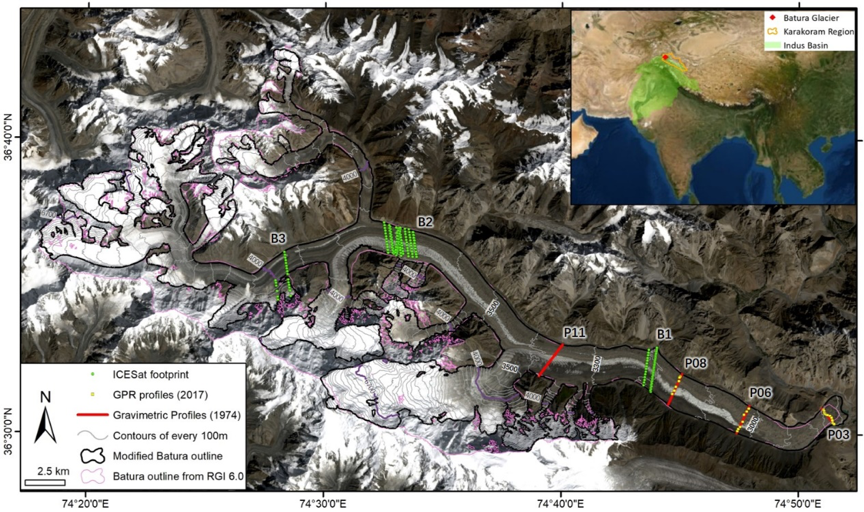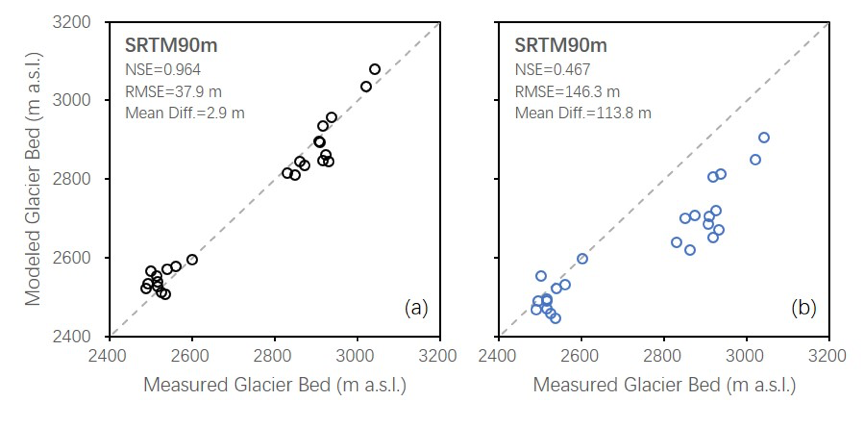| News |
| Latest news | |
| Int’l Cooperation activities | |
| Events & Announcement | |
| Recent Activities |
| Location: Home>News>Recent Activities |
| Scientific Reports: Observational evidence of Karakoram Anomaly |
Stable or marginal mass loss dominating in Karakoram (“Karakoram Anomaly”) has been reported widely through remotely sensed glacier surface elevation variation of either points (satellite laser altimetry) or surface (digital elevation models). Because of the rugged terrain and the challenges involved in field surveys, long-term ground observed data on the Karakoram is sparse. In particular, the measurements of the ice thickness in High Mountain Asia are few compared with those of the glacier amount, though it is an important parameter to verify ice volume and to investigate the glacier mass balance. The international team led by Prof. Yinsheng Zhang from the Institute of Tibetan Plateau Research, Chinese Academy of Sciences has carried out continuous glacier observations in the Upper Indus Basin, also known as the “Pakistan Water Tower”, for many years. Recently, by tracking profiles from the first survey by China–Pakistan Batura Glacier Investigation Group in 1974–1975, the team revisited Batura Glacier (Fig. 1) and conducted updated measurements of the glacier surface elevation and ice thickness for this large valley glacier of Karakoram.  Figure 1 Topography of Batura Glacier with ice thickness measurement and ICESat footprint. Results of ground penetrating radar (GPR) measurement were used to improve the accuracy of an ice thickness distribution model (GlabTop2) (Fig. 2) and thereby estimating the ice volume of Batura Glacier precisely. Then the variations of tongue-averaged surface mass balance were investigated using multi-source data via mass conservation equation.  Figure 2 Measured versus modeled glacier bed position results with the optimized parameterization of this study (a) and original ones (b), respectively. “We observed a marginal thinning in Batura during 2000–2016, with a changing rate in glacier surface elevation of -0.12 ± 0.27 m yr-1. This indicated that the mass gain in the accumulation area nearly compensated the mass loss in the ablation area.” said Haifeng Gao, the lead author of this study which was recently published in Scientific Reports. The research team also found a steady rate of surface decrease (Fig. 3) and no significant velocity change in the Batura tongue, implying an absence of significant variation during the past 40 years. Moreover, the tongue averaged mass balance diminished by more than half from the 1970s to the 2010s (Table 1). “It can be therefore inferred a near-steady state of Batura Glacier post 2000, which provides an evidence for the “Karakoram Anomaly.” Haifeng Gao added.  Figure 3 Boxplot of rate of change in Batura Glacier surface elevation at different sections Table 1 Average surface elevation change (Δh), emergence velocity (ve), and surface mass balance (B) below each profile at the lower part of the glacier during 1974–1975 and 2007–2011.  This research was jointly supported by National Key Research and Development Program of China, National Natural Science Foundation of China, and International Partnership Program of Chinese Academy of Sciences. Full text of the paper is available online https://www.nature.com/articles/s41598-020-57660-0. |
